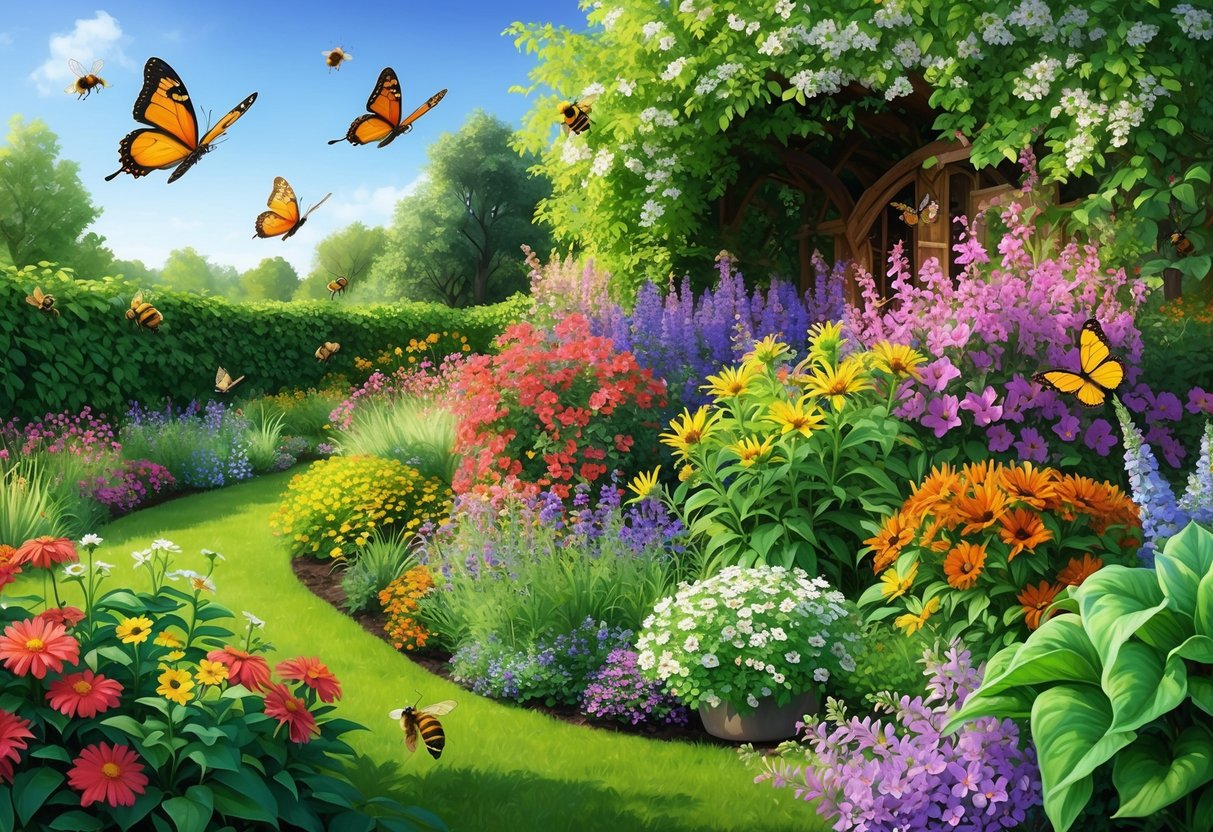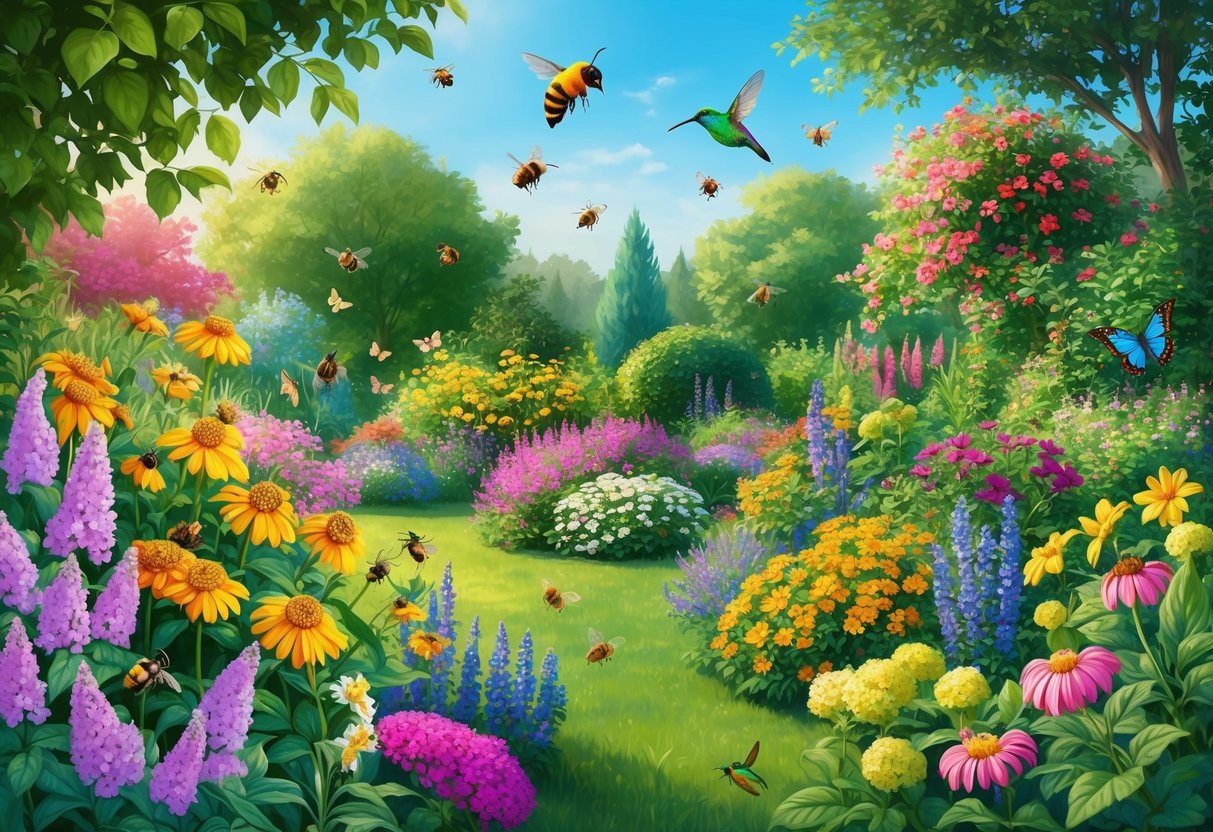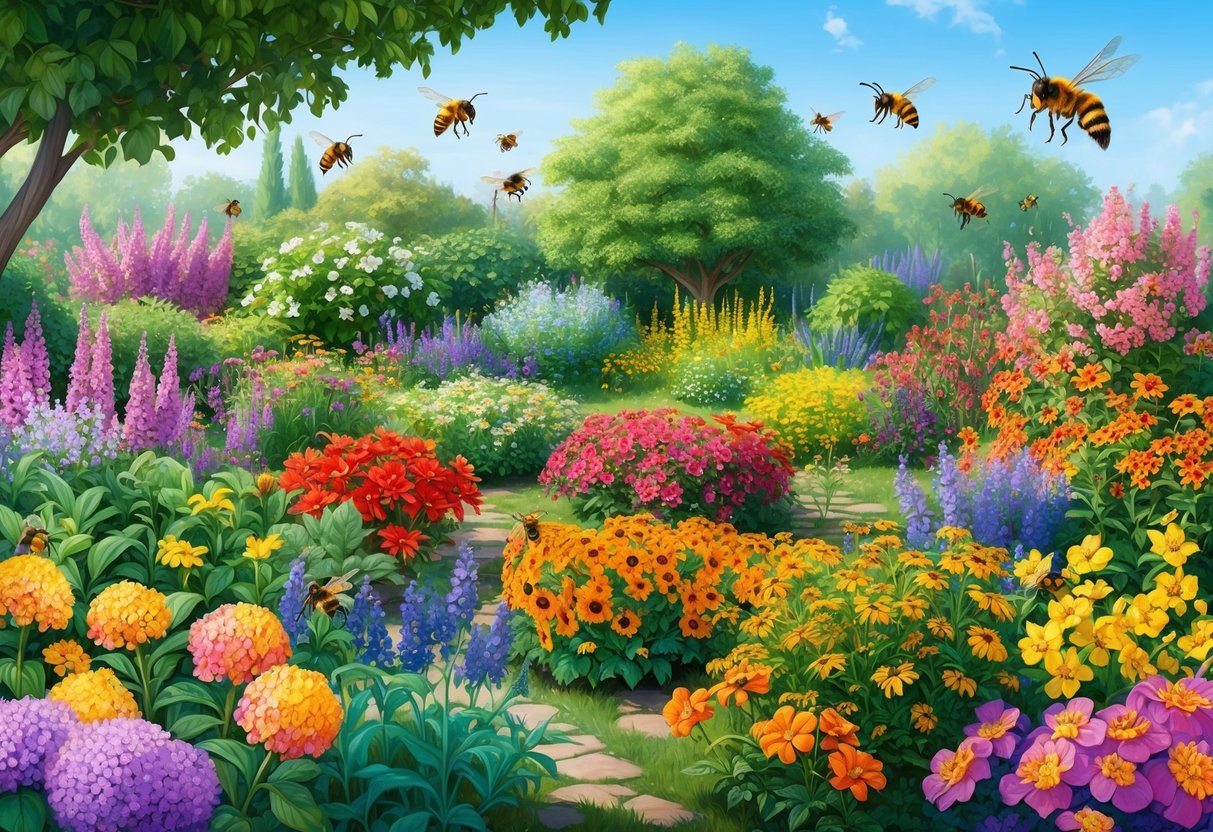
Advanced Tips: Maximizing Blooms and Attracting Diverse Species

Gardeners can create a thriving habitat for pollinators by selecting a variety of plants, planning for continuous flowering, and using strategic planting layouts. Special consideration for specific pollinators, including monarch butterflies and native bee species, ensures greater garden biodiversity.
Planting for All Seasons
To support pollinators such as bees, bumblebees, and butterflies throughout the year, it’s essential to plant species with staggered bloom times. Early spring bulbs like crocus and snowdrops offer a vital nectar source when few other flowers are available.
Mid-season blooms, such as lavender and echinacea, are especially attractive to diverse pollinator species. For late bloomers, asters and goldenrod continue to feed pollinators well into fall.
Incorporating native plants enhances food availability and resilience against disease. Cluster planting—grouping three or more of the same species together—helps pollinators find flowers more efficiently.
Lining pathways with continuous blooms also creates corridors, guiding pollinators safely across the garden landscape. See how pollinator corridors work to support movement and abundance at this guide to creating pollinator pathways.
Encouraging Monarchs and Other Key Pollinators
Monarch butterflies rely on milkweed species as their sole larval host plant. Planting common milkweed, butterfly weed, or swamp milkweed provides essential breeding sites.
Position milkweed in sunny, sheltered spots and avoid pesticides to protect vulnerable caterpillars and adult butterflies. To attract a wide variety of bee species and bumblebees, gardeners should choose nectar-rich perennials like salvia, bee balm, and sunflowers.
Herbs such as oregano and thyme double as kitchen staples and pollinator magnets. Grow flowering plants in drifts at least three feet wide.
Large groupings not only increase visibility for flying insects but also allow efficient foraging. Regularly deadhead spent blooms to extend the flowering season, ensuring that pollinators never lack a food source.
Frequently Asked Questions

Selecting the right flowering plants can boost biodiversity, support healthy pollinator populations, and enhance garden vibrancy throughout the growing season. Perennial and spring-blooming flowers are critical for providing nectar and habitat for beneficial insects like bees and butterflies.
What are the top perennial flowers that attract bees and butterflies?
Lavender, coneflower (Echinacea), and Black-eyed Susan are top-performing perennials. These plants offer abundant nectar and pollen over extended bloom periods, drawing both bees and butterflies to the garden.
Additionally, native milkweed varieties and salvia are excellent choices for sustaining pollinators through the summer season.
Which spring-blooming flowers are known to improve garden health and attract pollinators?
Crocus, daffodils, and hyacinths are early bloomers that provide essential forage for bees emerging in spring. Tulips and alliums also add color and attract pollinators.
These spring flowers help strengthen the garden ecosystem by feeding pollinators at a time when few other food sources are available.
Can you list the best flowering plants for a home garden that support local pollinator populations?
Some of the best flowers for home gardens include bee balm, coreopsis, phlox, and asters. These varieties not only thrive in home settings but also offer continuous blooms and rich nectar to bees, butterflies, and even hummingbirds.
Native plants adapted to the local climate often provide the most benefit to indigenous pollinators.
What floral varieties are ideal for nurturing bees, the leading pollinators, in a residential setting?
Borage, sunflowers, and clover are especially appealing to bees in home gardens. Herbs such as oregano, thyme, and chives provide both culinary value and nourishment for pollinators when allowed to flower.
These plants help encourage robust bee activity, which leads to improved fruit and vegetable yields.
What flowers should I plant in raised beds to attract a variety of pollinators and promote a healthy garden ecosystem?
Raised beds can be filled with calendula, nasturtium, cosmos, and zinnias. These annuals and tender perennials are favored by bees, butterflies, and hoverflies.
Including diverse flower shapes and colors in raised beds creates a welcoming habitat for many beneficial insects and supports overall garden health.
What are some easy-to-maintain spring flowers that contribute to pollinator-friendly gardens?
Marigolds, pansies, and violas are spring flowers that require minimal care.
These plants offer quick color and attract a range of pollinators.
Their adaptability makes them perfect for containers, borders, and small-space gardens.